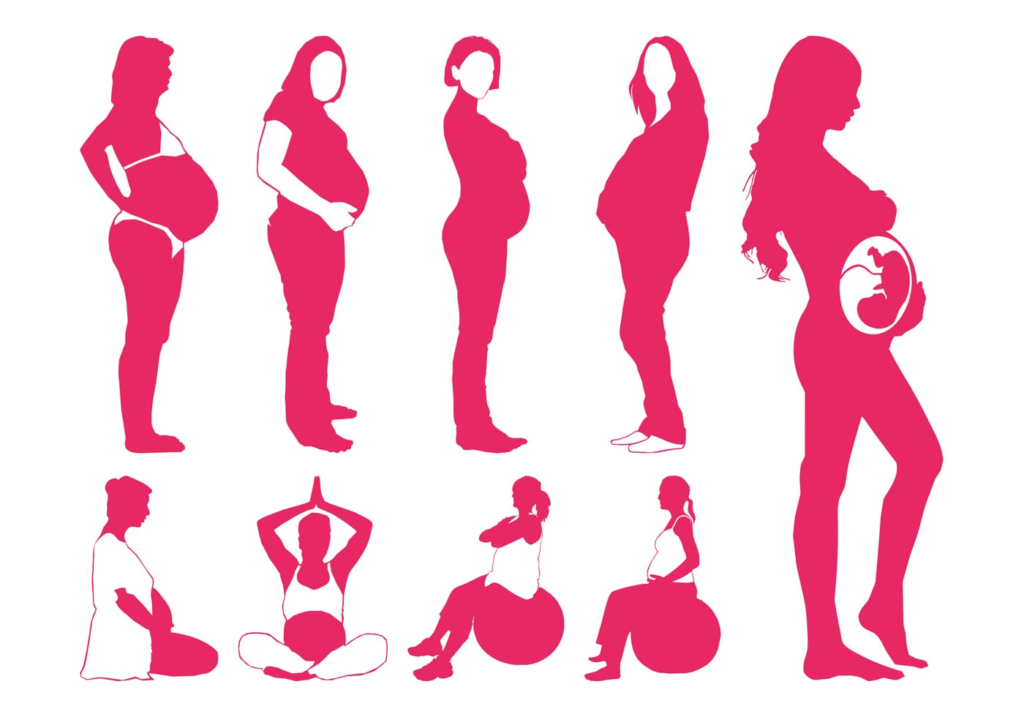To embark on the journey of motherhood, it’s essential to prepare for pregnancy and childbirth with thoughtful planning and awareness. These milestones mark profound physical and emotional changes, requiring women to be well-prepared in advance. Whether it’s understanding the nutritional needs, medical checkups, or lifestyle adjustments, taking early steps ensures a smoother pregnancy and a healthier baby. As you prepare for pregnancy and childbirth, focusing on mental and physical well-being can make the experience more manageable and rewarding for you and your growing family.
Key Signs That Labor Is Approaching
Your body provides several signals that labor may be near. While not all women experience these signs the same way, being aware of them can help you prepare emotionally and physically for the big day. Common indicators include:
- Baby Dropping (Lightening): Your baby may move lower into the pelvis a few weeks or even hours before labor begins, making breathing easier but increasing pressure in the lower abdomen.
- Braxton Hicks Contractions: These are practice contractions that prepare your uterus for the real thing. They are often irregular and less intense but become stronger and more frequent as labor approaches.
- Loss of the Mucus Plug: The discharge of the mucus plug, often referred to as the “bloody show,” is a sign that your cervix is beginning to dilate in preparation for birth.
- Water Breaking: A rupture in the amniotic sac, commonly known as your water breaking, often signifies that labor is imminent and it’s time to consult your healthcare provider.

prepare for pregnancy and childbirth: Preparing Your Mind and Body for Labor
prepare for pregnancy and childbirth: To mentally and physically prepare for labor, it’s important to integrate both relaxation techniques and physical readiness strategies:
1. Relaxation and Breathing Techniques
Mindfulness practices like deep breathing, visualization, and hypnobirthing can help you manage pain and stay calm during labor. These techniques are useful for reducing anxiety, particularly during contractions, and can also promote the release of oxytocin, aiding the progress of labor.
2. Perineal Massage
Perineal massage in the weeks leading up to labor can reduce the risk of tearing or the need for an episiotomy during childbirth. It works by stretching the perineum (the area between the vagina and anus), making it more flexible for delivery.
3. Maintaining Physical Activity
Regular physical activity, such as walking, swimming, or prenatal yoga, enhances your strength, endurance, and flexibility. These exercises help your baby position themselves correctly and can speed up labor, allowing for a smoother and less painful birth experience.
4. Hydration and Nutrition
Proper hydration is crucial, especially as you approach labor. Water helps maintain energy levels and keeps the amniotic fluid levels stable. Eating a balanced diet, rich in protein and complex carbohydrates, provides the stamina necessary for labor and supports overall health for both you and your baby.
prepare for pregnancy and childbirth:
Understanding Labor Hopscotch
Labor hopscotch is a step-by-step guide that involves seven key exercises designed to help tilt the pelvis, encouraging the baby to move down through the birth canal during labor. These exercises can be initiated as early as 20 weeks into pregnancy and are particularly helpful during labor:
- Mobilization: Engage in exercises that tilt the pelvis, such as squats and lunges, which aid your baby’s movement.
- Toilet Breaks: Regular toilet visits ensure that your bladder is not obstructing the baby’s head.
- Use a Birthing Stool: A birthing stool can help tilt the pelvis and facilitate labor.
- Hydration and Water Therapy: Staying hydrated and using warm water (e.g., baths) can relax muscles and ease contractions.
- Yoga Mat: Practice labor positions on all fours to aid the baby’s movement.
- Birthing Ball: Sitting or leaning on a birthing ball in a “figure of 8” motion can help the pelvis adjust.
- Alternative Therapies: Aromatherapy, acupressure, or massage can provide additional pain relief and relaxation during labor.

The Role of Antenatal Classes
Antenatal classes are invaluable for learning about labor, birth, and caring for your newborn. These classes also teach important skills, such as how to manage contractions, breathing techniques, and different birthing positions. Many mothers have found that attending these classes helped them feel more prepared and confident about labor, easing their fears and anxieties.
Flexible Birth Plan
While having a birth plan can help you feel more in control, it’s important to remain flexible. Birth can be unpredictable, and your preferences may need to adjust depending on the circumstances. Discussing your preferences with your midwife or doctor ahead of time will ensure that your wishes are respected while keeping the well-being of both you and your baby in mind.
conclusion
In conclusion, is necessary to ensure the health of the mother and child and Prepare for pregnancy and childbirth. By focusing on proper nutrition, regular prenatal care, and emotional well-being, you can lay the foundation for a smooth pregnancy and successful childbirth. Prepare for pregnancy and childbirth, remember that every step you take toward self-care and planning will help you embrace this life-changing journey with confidence and peace of mind.

